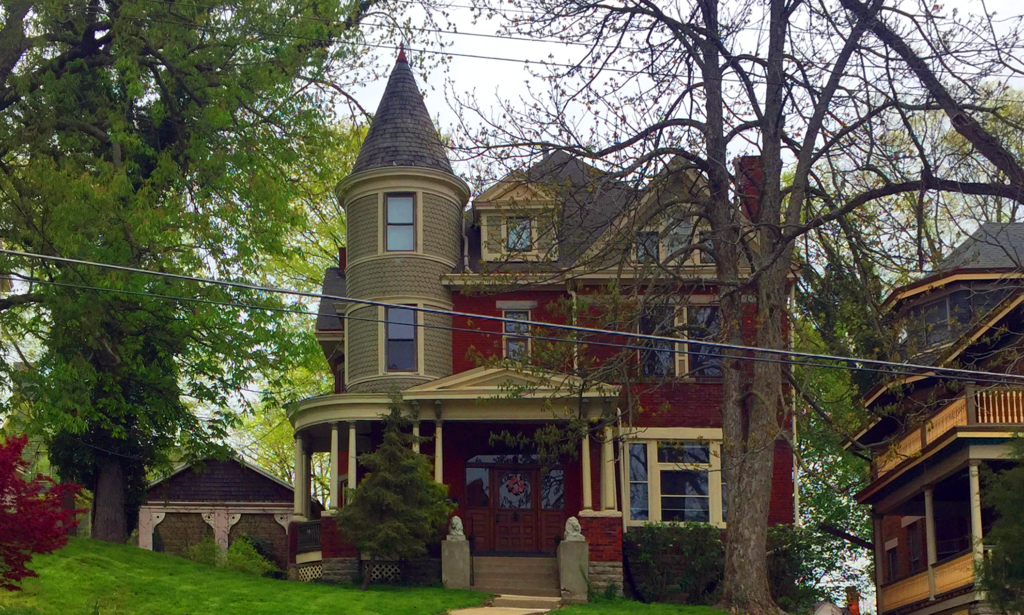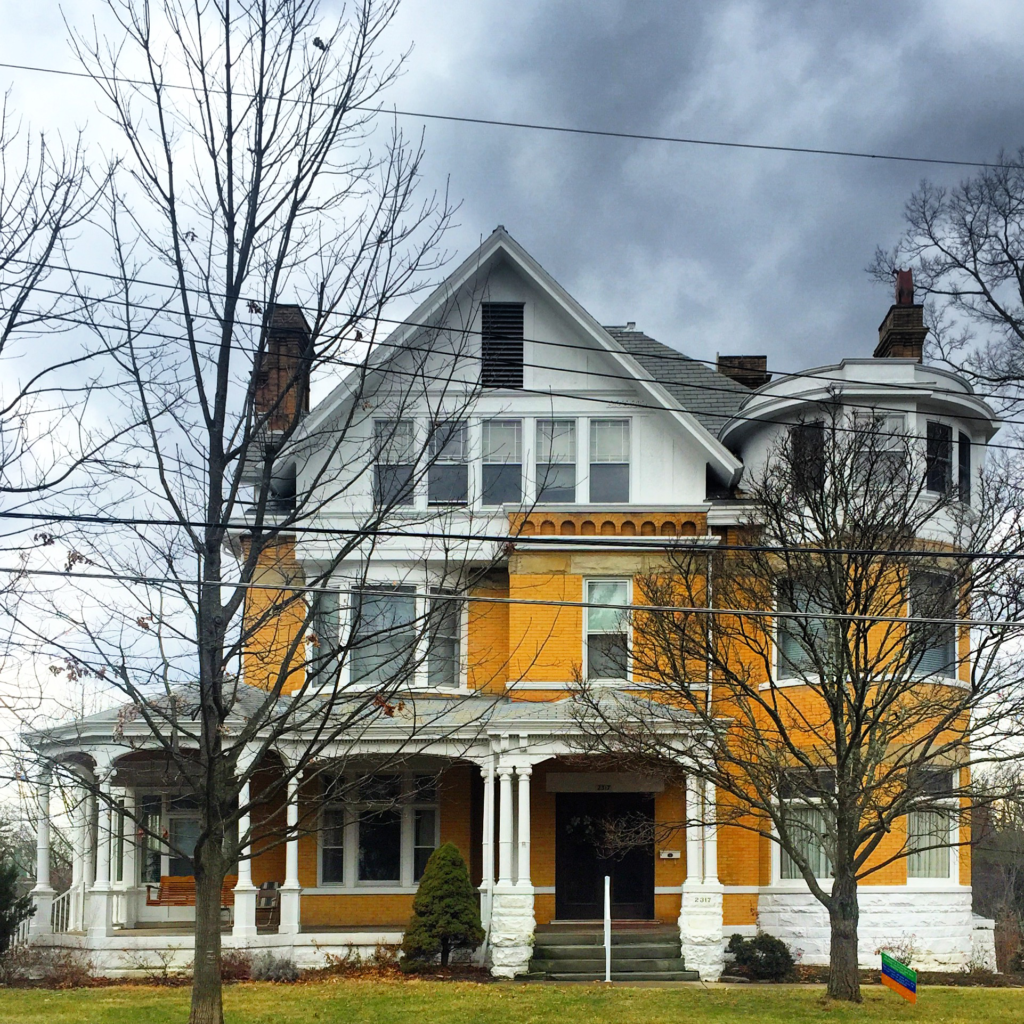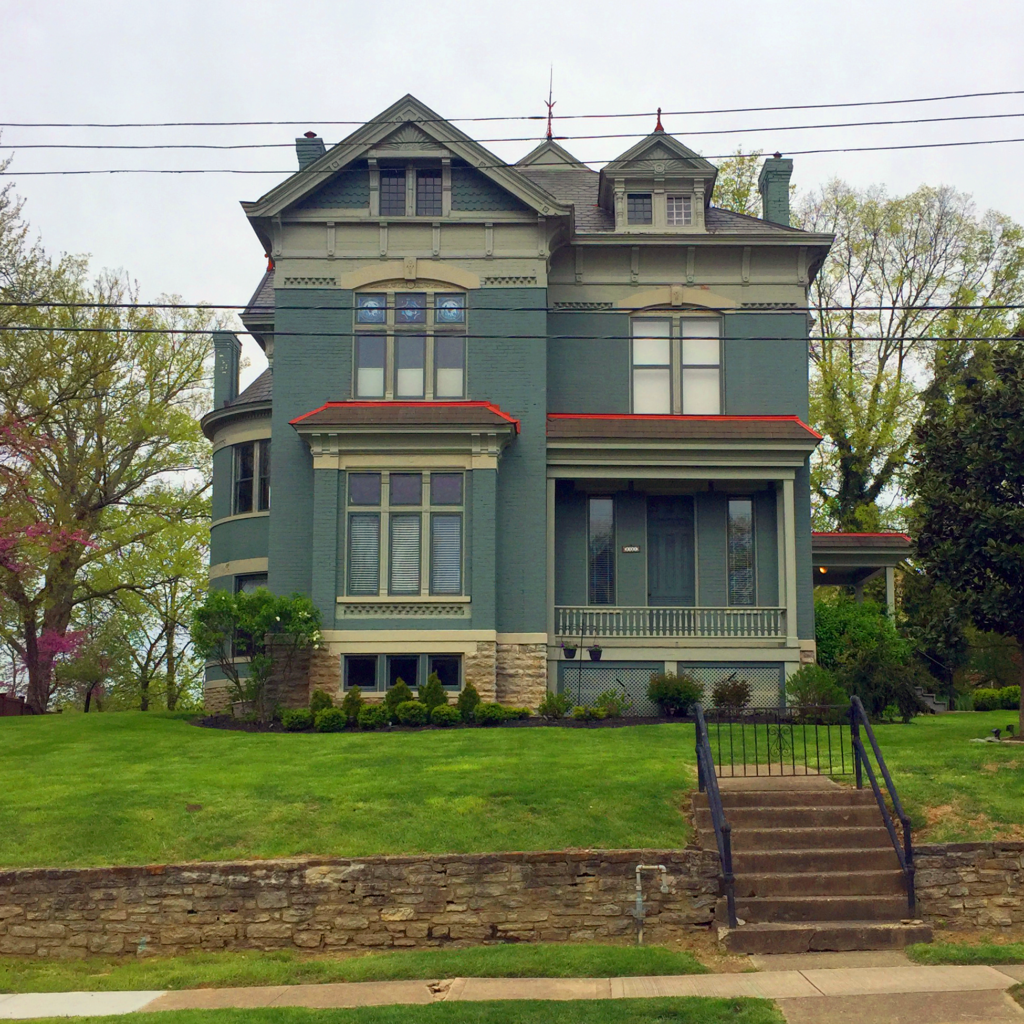adapted from Conservation Guidelines: Uplands Historic District
photos by Maya Drozdz
The Uplands Historic District in East Walnut Hills is notable for its high concentration of late 19th century residential architecture within a relatively small area. Locally and nationally prominent architects such as Desjardins & Hayward, Samuel Hannaford, Lucian Plympton, S.S. Godley, and Aiken & Ketcham designed many of the homes.
These buildings represent some of the finest examples of residential architecture in the city. They illustrate not only an architectural style but also a period in the city’s development and, more specifically, the growth of this portion of East Walnut Hills. These buildings are remarkably well preserved and present an extremely clear picture of affluent residential architecture in Cincinnati.

The oldest houses in the district, dating back to the 1870s, are in the Italianate style, with low-pitched roofs, widely overhanging eaves with decorative brackets and tall, narrow windows. The Second Empire style of the Victorian period is very similar to Italianate but includes a distinctive mansard roof often with dormer windows and molded cornices with decorative brackets below. 2406 Ashland Ave. is a great example of Second Empire.

Built by W. Griffith in 1875, the property at 2344 Ashland Avenue is a rare example of the Stick style in Cincinnati. Characteristics of the style include a steeply pitched roof with cross gables, decorative trusses in the gables, overhanging eaves with exposed rafters or brackets, wooden wall cladding with patterns of horizontal, vertical or diagonal boards and porches with diagonal or curved brackets. The Stick style is thought of as a transitional style between the High Victorian Gothic and the Queen Anne style, of which the district includes many examples.



The Queen Anne style was perhaps the most used style in this district. It is identified by its steeply pitched, irregularly shaped roof usually with a front gable, bay windows, patterned shingles and other means of differing wall textures. Buildings tended to be asymmetrical with partial or full width porches that sometimes wrapped around the houses’ sides.

Patterned brick was an unusual method of adding wall texture and was usually a sign of an architect-designed house, as seen on 2317 Grandview Ave., a Queen Anne home designed by Samuel Hannaford.

Shingle-style houses were also popular during the Queen Anne period. They also featured asymmetrical facades, large porches and shingled wall surfaces, but walls were clad with continuous wood shingles without interruption at corners. Often the first story was stone or brick and many examples had towers. Roofs were steeply pitched, but dormers took on more sculptured shapes and eaves were located at multi-levels.
E. Cort Williams entered the US Navy in 1852 as a Mate and was promoted to Acting Ensign in 1864. He served much of his time aboard the USS Juliet, which participated in General Sherman’s unsuccessful attack on the Chickasaw Bluffs. Its most dangerous mission was the Red River Campaign — suffering many casualties, the Juliet and her crew fought off Confederate artillery and gunboat fire for many days. Williams had the house at 2305 Upland Pl. built in 1885 and, the following year, he recounted his naval exploits in a paper for the Loyal Legion of the United States entitled “Recollections of the Red River Expedition.”

One of the most prolific architects in the district and designer of one of the best known homes in Cincinnati was Lucian Plympton. Plympton was one of the more eccentric or artistic architects of Cincinnati in the 1880s and ’90s and was responsible for the “Swiss Chalet” with which so we are familiar locally. His design for 2214 Upland Pl. features a low-pitched front gable roof with wide eave overhangs, second-story balconies with flat cutout patterned balustrade and trim, as well as patterned stickwork decoration on exterior walls. Instead of traditional nail-and-wood construction, the upper stories are built of thick timbers and joined by 3,000 handmade wooden pegs.

Colonial Revival homes began to appear later in the 1890s. They started to take on a more symmetrical appearance, and the use of classical detailing dominated as residences became more formal. Central entrances framed with sidelights and columned porches or porticos were common, as were large windows, frequently with multiple panes. 2334 Upland Pl., designed by Desjardins & Hayward, is a great example of the Colonial Revival style.

The Clermont at 1406 E. McMillan St. is an example of Colonial Revival elements being applied to a large apartment building. By end of the 19th century, electric trolleys radiated out of Cincinnati’s basin to developing suburbs. Designed by brothers Joseph and Bernard Steinkamp for Thomas Emery’s Sons Inc., the Clermont is one of many large-scale blocks of flats built along major thoroughfares to accommodate the city’s growing population. You can find similar buildings of the era, many of them also designed by the Steinkamps and built by the Emerys, along other major arteries in Cincinnati like Madison Rd., Ludlow Ave. and Reading Rd.

Tudor Revival houses are less formal than the Colonial Revival and are generally recognized by the half-timbered upper floors. First floors are usually stone, sometimes brick and irregular in plan. Entrances are often tucked in corners or niches and windows tend to be tall and narrow, commonly grouped in multiples with multi-pane glazing. 2315 Upland Pl. is an example of a home influenced by the Tudor Revival style in the district. This home was designed by Samuel Hannaford & Sons, the prominent architectural firm led by Samuel Hannaford, designer of Cincinnati landmarks including City Hall and Music Hall. It was built for Joseph A. Jones, who worked for Robert Jones & Co., a manufacturer of steam boilers and lard tanks. (Lard is, of course, a byproduct of pork-processing, the industry that gave Cincinnati its 19th century Porkopolis moniker.)

The Grandview (originally Haydock Apartments), a multi-unit building at 2400 Grandview Ave., exhibits elements of the Jacobethan (Tudor Revival subgroup) and Renaissance styles around its main entrance and porches. Like the Clermont, it hearkens back to when East Walnut Hills was largely a streetcar suburb. Both now contain rental apartments.


There are a number of houses at the south end of Upland Place that share certain characteristics of the Tudor style but also show a heavy influence of the evolving Craftsman style, which was an outgrowth of the English Arts and Crafts movement. Typical characteristics of this style include exposed rafter ends under wide, overhanging roof eaves, oriental roof shapes and half-timber detailing. Examples of these unusual buildings include 2200 (designed by Lucian Plympton for his mother Cordelia Plimpton; change in spelling is intentional), 2202, 2206, and 2210 Upland Place.

Some of the most ornate or picturesque houses in the district are designed in the Chateauesque style. Identifying features of this style include steeply pitched roofs with a busy roofline involving many vertical elements including spires, pinnacles, turrets, gables, wall dormers and shaped chimneys. 2321 Upland Pl. is an example of the Chateauesque style in the district, with an 1890s addition attributed to Desjardins & Hayward. This home was given to Charles Mayer and his bride Fannie when they moved back to Cincinnati after Charles’ stint as US District Attorney in Alabama. For a number of years, it served as a nursing home and is now a small condo building.

2321 Grandview Ave. is another home by Desjardins & Hayward. It was built for John Moses Brunswick, a Jewish immigrant from Switzerland, who made his fortune with the J.M. Brunswick Manufacturing Company, which popularized billiards in the US. Brunswick passed away in 1886, but his company continued to flourish, merging with competitors and diversifying its product line into toilet seats, automobile tires, and even disc phonograph records under the name Brunswick Records. The business still exists today.

This home at the southern end of Grandview Ave. is another work by Desjardins & Hayward, built for Isaac S. Deutsch, a well-known businessman connected with the George W. McAlpin Co., the Cincinnati-based department store. The second owner of this home was Oscar F. Barrett, who owned Ohio river businesses (tow boat and steamboat operators). Barrett was known nationally for advocating for locks and dams on the rivers to improve their navigability. The imposing, yet restrained, structure features a three-story red sandstone tower with a crenellated parapet.